 | TODAY IN SCIENCE HISTORY
NEWSLETTER - 18 DECEMBER |
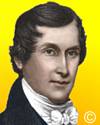 On 18 Dec 1834, Canvass White died, an American civil engineer , known for his work in building canals, and who patented the first process for making hydraulic cement in the United States. assisted Benjamin Wright in the construction of the Erie Canal from 1816. To prepare for building the canal, in late 1817, White travelled extensively in Great Britain visiting canals and learning construction methods. With this experience, on his return, he was Wright's principal assistant. Building locks required a hydraulic cement as mortar between the stones. Because of the high cost to import it from England, White investigated making cement from local limestone. He found rock near the canal route in Madison County was very suitable. He obtained a the first U.S. patent for waterproof cement on 1 Feb 1820. White was consulting engineer for many other canal projects, but retired young due to poor health. The Obituary of Canvass White from The History of Cohoes, N.Y. (1877) describes his short life. After retiring, he died shortly afterwards at age 44, but his accomplishments remained. On 18 Dec 1834, Canvass White died, an American civil engineer , known for his work in building canals, and who patented the first process for making hydraulic cement in the United States. assisted Benjamin Wright in the construction of the Erie Canal from 1816. To prepare for building the canal, in late 1817, White travelled extensively in Great Britain visiting canals and learning construction methods. With this experience, on his return, he was Wright's principal assistant. Building locks required a hydraulic cement as mortar between the stones. Because of the high cost to import it from England, White investigated making cement from local limestone. He found rock near the canal route in Madison County was very suitable. He obtained a the first U.S. patent for waterproof cement on 1 Feb 1820. White was consulting engineer for many other canal projects, but retired young due to poor health. The Obituary of Canvass White from The History of Cohoes, N.Y. (1877) describes his short life. After retiring, he died shortly afterwards at age 44, but his accomplishments remained. |
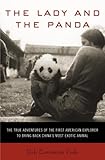 On 18 Dec 1936, the first giant panda infant to reach the U.S. alive - Su-Lin - was brought back from an expedition in Tibet by Ruth Harkness. Today's Science Store pick is: The Lady and the Panda: The True Adventures of the First American Explorer to Bring Back China's Most Exotic Animal, by Vicki Croke. This true story of Ruth Harkness is astonishing - a Manhattan bohemian socialite who trekked to Tibet and, against all but impossible odds, made an extraordinary journey and succeeded in her goal to capture a panda. Harkness should be ranked with Amelia Earhart as one of the great woman adventurers of all time. On 18 Dec 1936, the first giant panda infant to reach the U.S. alive - Su-Lin - was brought back from an expedition in Tibet by Ruth Harkness. Today's Science Store pick is: The Lady and the Panda: The True Adventures of the First American Explorer to Bring Back China's Most Exotic Animal, by Vicki Croke. This true story of Ruth Harkness is astonishing - a Manhattan bohemian socialite who trekked to Tibet and, against all but impossible odds, made an extraordinary journey and succeeded in her goal to capture a panda. Harkness should be ranked with Amelia Earhart as one of the great woman adventurers of all time. It was not easy. Indeed, everything was against Ruth Harkness. In decadent Shanghai, the exclusive fraternity of white male explorers patronized her, scorned her, and joked about her softness, her lack of experience and money. But Ruth ignored them, organizing, outfitting, and leading a bare-bones campaign into the majestic but treacherous hinterlands where China borders Tibet. As her partner she chose Quentin Young, a twenty-two-year-old Chinese explorer as unconventional as she was, who would join her in a romance as torrid as it was taboo. Traveling across some of the toughest terrain in the world–nearly impenetrable bamboo forests, slick and perilous mountain slopes, and boulder-strewn passages–the team raced against a traitorous rival, and was constantly threatened by hordes of bandits and hostile natives. The voyage took months to complete and cost Ruth everything she had. But when, almost miraculously, she returned from her journey with a baby panda named Su Lin in her arms, the story became an international sensation and made the front pages of newspapers around the world. No animal in history had gotten such attention. And Ruth Harkness became a hero. It is available New from $3.50. Used from $0.01. (As of time of writing.). | | For picks from earlier newsletters, see the Today in Science History Science Store home page. | |
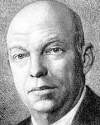 | Anyone who has had actual contact with the making of the inventions that built the radio art knows that these inventions have been the product of experiment and work based on physical reasoning, rather than on the mathematicians' calculations and formulae. Precisely the opposite impression is obtained from many of our present day text books and publications. - Edwin Armstrong, American electrical engineer and inventor (born 18 Dec 1890).  |
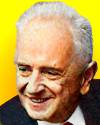 | Nature's stern discipline enjoins mutual help at least as often as warfare. The fittest may also be the gentlest. - Theodosius Dobzhansky, Ukrainian-American geneticist and evolutionist (died 18 Dec 1975).  |
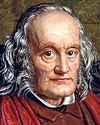 | The steam-engine in its manifold applications, the crime-decreasing gas-lamp, the lightning conductor, the electric telegraph, the law of storms and rules for the mariner's guidance in them, the power of rendering surgical operations painless, the measures for preserving public health, and for preventing or mitigating epidemics,�such are among the more important practical results of pure scientific research, with which mankind have been blessed and States enriched. - Sir Richard Owen, English zoologist, anatomist and palaeontologist (died 18 Dec 1892).  |
| Before you look at today's web page, see if you can answer some of these questions about the events that happened on this day. Some of the names are very familiar. Others will likely stump you. Tickle your curiosity with these questions, then check your answers on today's web page. |
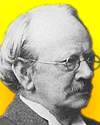 | Sir J.J. Thomson, an English physicist, born 18 Dec 1856, helped revolutionize the knowledge of atomic structure by his discovery of the electron (1897). He received the Nobel Prize for Physics in 1906 and was knighted in 1908. He experimented with "cathode rays," which prompted him to make a bold proposal: these mysterious rays are streams of particles much smaller than atoms.
 By what name did J.J. Thomson refer to the particles he discovered? |
 | Edwin Howard Armstrong was an American electrical engineer and inventor. He invented the continuous-wave transmitter, the regenerative circuit and superheterodyne circuits. His most important radio invention is recognized by everyone today. He died by suicide, exhausted by nonstop patent battles to protect his work.
 What was Armstrong's last radio innovation that remains the backbone of the broadcast industry today? |
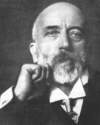 | Andrija Mohorovicic (1857-1936) was a Croatian meteorologist and geophysicist who discovered the boundary now named the Mohorovicic discontinuity. He analyzed the spreading of seismic waves with shallow depths through the Earth. From these, he was the first to establish, on the basis of seismic waves, a surface of velocity discontinuity.
 What regions of the Earth's structure are separated by this boundary? |
 | Sir Richard Owen (1804-1892) was an English anatomist and paleontologist who is remembered for his contributions to the study of fossil animals and for his strong opposition to the views of Charles Darwin. He created the word “Dinosaur” and many of the terms still used today in anatomy and evolutionary biology, including “homology.”
 What is the meaning of the words used to coin the name “dinosaur?” |
| On 18 Dec of a certain year, John William Draper took the first celestial photograph made in the U.S. He exposed the plate for 20 minutes using a 5-inch telescope.
 What was the subject of Draper's first celestial photgraph? |
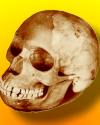 | In 1912, the discovery of a skull then regarded as the first important fossil human skull ever to be unearthed in England was announced at a meeting of the Geological Society of Great Britain. In 1953, thanks to some rigorous scholarly detective work, it was revealed to be modern forgery.
 By what name was this “fossil man” known? |
When you have your answers ready to all the questions above, you'll find all the information to check them, and more, on the December 18 web page of Today in Science History. Or, try this link first for just the brief answers.
Fast answers for the previous newsletter for December 17: the atmosphere, where cosmic rays cause nuclear transmutation of nitrogen • ionosphere • potassium and sodium • after the name of a river near Glasgow University when he spent his career. • 120 feet • conjunction of six planets; that alignment of planets would cause a magnetic current which would pierce the sun and thereby engulf the earth in flames. |
 If you enjoy this newsletter, the website, or wish to offer encouragement or ideas, please send feedback by using your mail reader Reply button. If you enjoy this newsletter, the website, or wish to offer encouragement or ideas, please send feedback by using your mail reader Reply button.
Your click on a StumbleUpon, Google+ or Facebook social button on the site webpages is also a welcome sign of appreciation. Thank you for using them. |
To find citations for quotations go to the corresponding webpage by clicking on the “quotes” balloon icon. Sources for the thumbnails appear on today's webpage with the corresponding item.
� This newsletter is copyright 2013 by todayinsci.com. Please respect the Webmaster's wishes and do not put copies online of the Newsletter � or any Today in Science History webpage. (If you already have done so, please remove them. Thank you.) Offline use in education is encouraged such as a printout on a bulletin board, or projected for classroom viewing. Online, descriptive links to our pages are welcomed, as these will provide a reader with the most recent revisions, additions and/or corrections of a webpage. For any other copyright questions, please contact the Webmaster by using your mail reader Reply button. |
--
If you do not want to receive any more newsletters,
Unsubscribe To update your preferences and to unsubscribe visit
this link 


 On 18 Dec 1834, Canvass White died, an American civil engineer , known for his work in building canals, and who patented the first process for making hydraulic cement in the United States. assisted Benjamin Wright in the construction of the Erie Canal from 1816. To prepare for building the canal, in late 1817, White travelled extensively in Great Britain visiting canals and learning construction methods. With this experience, on his return, he was Wright's principal assistant. Building locks required a hydraulic cement as mortar between the stones. Because of the high cost to import it from England, White investigated making cement from local limestone. He found rock near the canal route in Madison County was very suitable. He obtained a the first U.S. patent for waterproof cement on 1 Feb 1820. White was consulting engineer for many other canal projects, but retired young due to poor health. The Obituary of Canvass White from The History of Cohoes, N.Y. (1877) describes his short life. After retiring, he died shortly afterwards at age 44, but his accomplishments remained.
On 18 Dec 1834, Canvass White died, an American civil engineer , known for his work in building canals, and who patented the first process for making hydraulic cement in the United States. assisted Benjamin Wright in the construction of the Erie Canal from 1816. To prepare for building the canal, in late 1817, White travelled extensively in Great Britain visiting canals and learning construction methods. With this experience, on his return, he was Wright's principal assistant. Building locks required a hydraulic cement as mortar between the stones. Because of the high cost to import it from England, White investigated making cement from local limestone. He found rock near the canal route in Madison County was very suitable. He obtained a the first U.S. patent for waterproof cement on 1 Feb 1820. White was consulting engineer for many other canal projects, but retired young due to poor health. The Obituary of Canvass White from The History of Cohoes, N.Y. (1877) describes his short life. After retiring, he died shortly afterwards at age 44, but his accomplishments remained. 



 By what name did J.J. Thomson refer to the particles he discovered?
By what name did J.J. Thomson refer to the particles he discovered? 
 What was Armstrong's last radio innovation that remains the backbone of the broadcast industry today?
What was Armstrong's last radio innovation that remains the backbone of the broadcast industry today? 
 What regions of the Earth's structure are separated by this boundary?
What regions of the Earth's structure are separated by this boundary? 
 What is the meaning of the words used to coin the name “dinosaur?”
What is the meaning of the words used to coin the name “dinosaur?”  What was the subject of Draper's first celestial photgraph?
What was the subject of Draper's first celestial photgraph? 
 By what name was this “fossil man” known?
By what name was this “fossil man” known?  If you enjoy this newsletter, the website, or wish to offer encouragement or ideas, please send feedback by using your mail reader Reply button.
If you enjoy this newsletter, the website, or wish to offer encouragement or ideas, please send feedback by using your mail reader Reply button. 

Δεν υπάρχουν σχόλια:
Δημοσίευση σχολίου